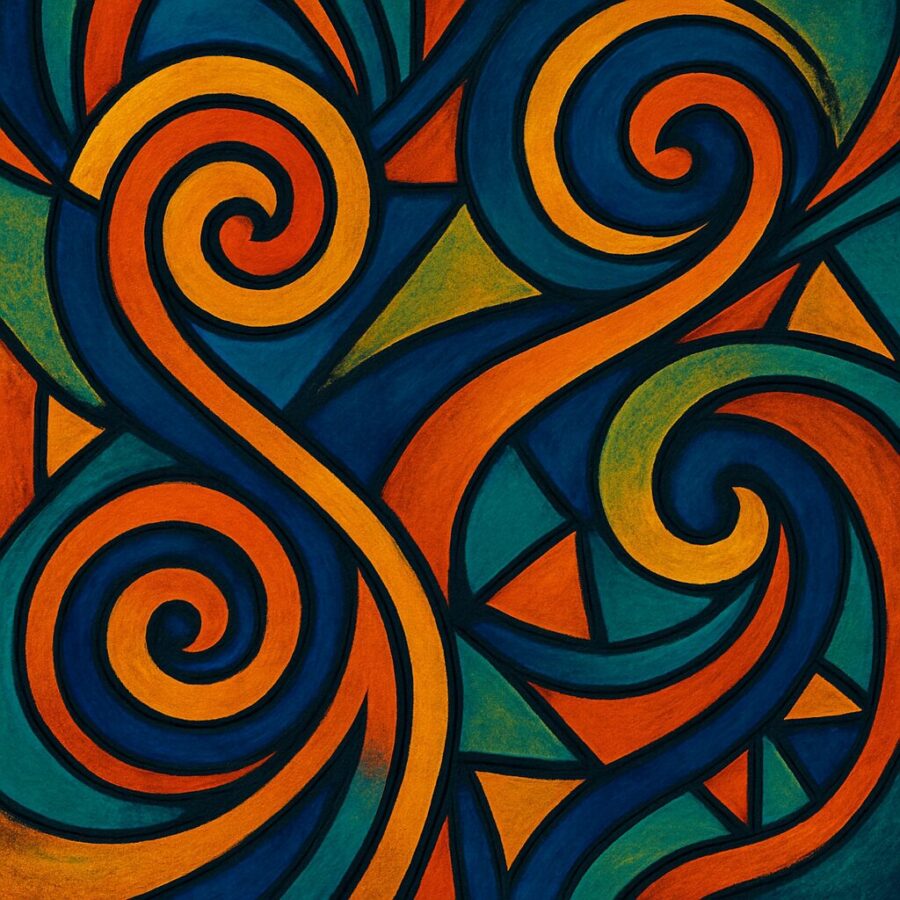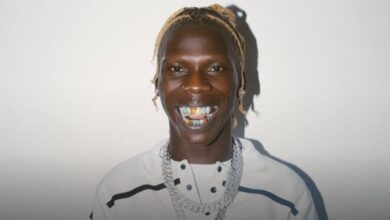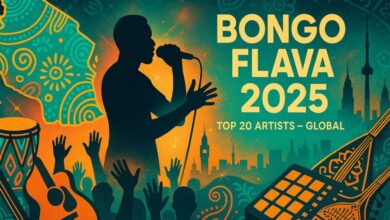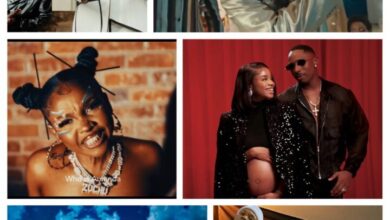
Bongo Flava is more than a genre; it’s a cultural movement that transformed Tanzanian youth identity and echoed across Africa. Born in the bustling streets of Dar es Salaam in the late 1990s, the style fused American hip‑hop with local Swahili lyrics, Afro‑Arab melodies, Bollywood soundtracks, Congolese guitars and East African storytelling. Over two decades later, Bongo Flava has grown from underground ciphers into a multi‑million‑dollar industry powered by streaming platforms, glittering music awards and international collaborations. This comprehensive essay traces its origin, evolution, major figures and contemporary relevance.
Origins: From Hip‑Hop Underground to Swahili Street Poetry
Tanzania’s flirtation with modern music started long before Bongo Flava. During the 1960s and 1970s, Congolese rumba and soukous dominated coastal clubs, while taarab ensembles performed lush Arabic‑influenced ballads. Traditional styles like ngoma and zinze remained integral to village celebrations. The advent of radio in the 1980s exposed Tanzanian youth to American R&B, hip‑hop and reggae. Cassette tapes of MC Hammer, Public Enemy, Tupac Shakur and Bob Marley circulated through Dar es Salaam’s markets. Urban teenagers began forming break‑dance crews and experimenting with rapping in English over imported beats.
The turning point came when artists started rapping in Swahili, the lingua franca spoken across East Africa. Radio announcers coined the term Bongo Flava—from Bongo (a slang word for Dar es Salaam meaning “brains”) and flava (American slang for “style” or “flavor”). Early pioneers like Mr. II (Sugu), Professor Jay (formerly Nigga J), Juma Nature, Dully Sykes, Albert Mangwea and Afande Sele laid the foundation. They combined rap rhythms with melodic hooks and socially conscious lyrics about corruption, HIV/AIDS, unemployment and everyday struggles in the ghetto. Their songs resonated with youth frustrated by post‑socialist austerity.
Bongo Flava emerged as a uniquely Tanzanian response to hip‑hop. Artists rapped in Swahili, often peppered with Kigogo (street slang), making the music relatable to local audiences. Producers like Pfunk Majani and Mageuzi sampled coastal tarab strings, traditional drums and Bollywood melodies, giving the sound a distinct East African flavor. Early hits such as Mr. II’s “Ni Mimi” (1996) and Professor Jay’s “Chemsha Bongo” became street anthems. Community radio stations like Radio One and Clouds FM played Bongo Flava alongside imported R&B and reggae, boosting its popularity.
Golden Era: The 2000s Explosion
As Tanzania liberalized its economy and media landscape in the late 1990s, Bongo Flava artists gained more exposure. The early 2000s marked the genre’s golden age. Record labels such as Mj Records and Bongo Records invested in local talent. Music videos aired on TV programs like Top Ten Music and Tujuane. The Kilimanjaro Music Awards (later the Tanzania Music Awards) recognized Bongo Flava categories, legitimizing the style.
A new wave of artists broadened Bongo Flava’s scope. Singers like Lady Jaydee (“Machozi”), TID (Top in Dar) (“Zeze”), Matonya (“Vaileti”) and Saida Karoli introduced R&B vocals and taarab influences. Bands like Mkubwa na Wanawe combined hip‑hop with Swahili jazz. Rappers Mwana FA and AY formed the duo Maujo and later pursued successful solo careers. They collaborated on hits like “Mpenzi” and “Usije Mjini,” blending rap verses with pop choruses.
Content wise, the golden era tackled diverse themes: romance, education, politics, HIV awareness and youth empowerment. Professor Jay’s “Zali la Mentali” (Featuring Juma Nature) addressed lazy youths relying on luck rather than hard work. Juma Nature’s “Kama Unataka Demu” humorously narrated dating scenarios. Lady Jaydee’s “Machozi” portrayed heartbreak. Most lyrics carried moral lessons or social commentary, aligning with Tanzania’s socialist values.
Bongo Flava also embraced cross‑border collaborations. Tanzanian artists teamed up with Kenyan acts like Nazizi and Prezzo, Ugandan star Jose Chameleone and the Congolese soukous group Koffi Olomide. These partnerships expanded the genre’s reach and added new sonic textures. Meanwhile, the rise of mobile phones and digital piracy allowed Bongo Flava to spread across East Africa as MP3s exchanged by Bluetooth and memory cards.
Digital Revolution and the New Generation
The late 2000s and early 2010s saw the global music industry upended by the internet. In Tanzania, this transition ushered a new generation of Bongo Flava superstars who used social media, YouTube and streaming platforms to reach audiences beyond East Africa.
Perhaps the most influential figure of this era is Diamond Platnumz. Born Nasibu Abdul Juma in 1989, Diamond burst onto the scene with “Kwitwiti” (2009) but found mainstream success with “Mbagala” (2010). He established his label WCB Wasafi and released hit after hit—“Number One” featuring Nigeria’s Davido, “Nasema Nawe” with Khadija Kopa, and “Marry You” with Ne‑Yo. His energetic dance moves, flashy music videos and polished production raised the bar for Bongo Flava. Diamond’s business acumen turned him into a music mogul; Wasafi signed artists like Harmonize, Rayvanny, Mbosso and Zuchu.
Another giant is Ali Kiba, whose soulful voice and catchy melodies made him a household name. Songs like “Mwana,” “Chekecha” and “Aje” dominated charts and dance floors. Ali Kiba’s rivalry with Diamond Platnumz fueled public debates and kept fans engaged. Meanwhile, rapper Ney wa Mitego became known for his controversial, politically charged lyrics, often clashing with authorities. Singer‑songwriter Vanessa Mdee brought a R&B/pop sensibility, delivering hits like “Niroge” and “Kisikiliza.”
The digital age also saw the rise of female stars such as Nandy, “The African Princess,” with hits like “Ninogeshe” and Sarina; and Maua Sama, known for “Iokote.” They commanded large social media followings and showed that women could thrive in the male‑dominated industry.
Bongo Flava artists embraced cross‑African collaborations. Diamond worked with South Africa’s Focalistic on “Baikoko,” Nigeria’s Tiwa Savage on “Fire,” and Uganda’s Meddy on “Slowly (Remix).” Harmonize partnered with Kenya’s Otile Brown, and Rayvanny collaborated with Congolese singer Innos’B. These partnerships fused Bongo Flava with amapiano, afrobeats and soukous, reflecting the continent’s sonic integration.
Watch Diamond Platnumz’s “Number One” featuring Davido:
The Industry: Production, Distribution and Business
Behind the scenes, Bongo Flava is supported by producers, studios, promoters and digital platforms. Early producers like Pfunk Majani and Moses Asambwa set the template. Today, hitmakers include Nahreel (of the group Navy Kenzo), S2kizzy, Lizer Classic (Wasafi’s in‑house producer), Bonga, and Abbah Process. They craft beats that incorporate afro‑house, trap, reggae and taarab, ensuring Bongo Flava remains fresh.
Distribution has shifted from physical CDs and cassettes to digital streaming. Platforms like Wasafi TV and Clouds TV broadcast music videos across Africa. YouTube channels generate millions of views, while streaming services such as Boomplay, Spotify and Apple Music allow global access. Tanzanian digital platform Mdundo offers music downloads via mobile credit. Bongo Flava artists also earn through brand endorsements, live performances and ringtone sales.
Businesswise, record labels and management teams handle marketing, bookings and content deals. Diamond’s Wasafi has been particularly influential, running a radio station (Wasafi FM), online TV, and annual festivals. Other labels include Kings Music (Ali Kiba), Alikiba’s label (Aje Music), and Slide Visuals. As the industry professionalizes, it has attracted sponsors like telecom companies, banks and soft drink brands.
Lyrics and Themes: Social Commentary, Romance and Everyday Life
Bongo Flava lyrics range from heartfelt love songs to biting social commentary. In the early days, many artists used rap to criticize corruption, poverty and moral decay. Professor Jay’s “Ndio Mzee” lamented elder politicians clinging to power. Mr. II’s “Mawazo” questioned economic inequality. These songs gave voice to youth disillusionment and demanded accountability.
Romance and relationships are the most common theme, often told through poetic metaphors and playful banter. Diamond’s “Jeje,” Ali Kiba’s “Aje,” Vanessa Mdee’s “Bado,” Harmonize’s “Happy Birthday,” and Nandy’s “Ninogeshe” celebrate love and desire. Many videos feature glamorous beach scenes, dance routines and couples in lavish settings, appealing to aspirational desires.
Religious and spiritual references appear, reflecting Tanzania’s largely Christian and Muslim population. Artists like Rose Muhando, primarily a gospel singer, collaborated with Bongo Flava stars, bridging secular and sacred. Songs like “Niseme” by Alikiba and “Waah!” by Diamond Platnumz with Koffi Olomide include lines praising God for success.
Another theme is party culture and self‑celebration. Tracks such as “Kwa Ngwaru” by Harmonize and Diamond, “Baila” by Chameleone, “Kwangwaru” by Rayvanny and Diamond, and “Baikoko” by Diamond and Focalistic fill clubs and street festivals with dance rhythms. They showcase the genre’s ability to produce feel‑good anthems.
Visual Aesthetics: Fashion, Dance and Video Culture
Bongo Flava’s success owes much to its visuals. From the start, artists embraced fashion to distinguish themselves. Baggy jeans and oversized jerseys from the early hip‑hop days gave way to stylish suits, designer sneakers and traditional kitenge outfits. Diamonds often wears flashy jewelry and head wraps, while Ali Kiba opts for tailored suits. Female artists like Nandy and Vanessa Mdee don glamorous dresses, reflecting global pop trends.
Dance is integral. Choreographers create signature moves for each song. For instance, “Kwangwaru” introduced a foot shuffle that went viral on TikTok. “Baikoko” popularized a shoulder shake and hip sway. In live performances, backup dancers add energy, while fans replicate the moves at weddings and clubs. Dance competitions on shows like Bongo Star Search keep choreography at the forefront.
Music videos evolved from low‑budget street scenes to high‑definition cinematic productions. Locations range from Dar es Salaam’s beaches to Johannesburg skyscrapers. Directors use drones, slow‑motion shots, costume changes and storylines. YouTube channels such as Diamond Platnumz, Wasafi TV, Kings Music and Navy Kenzo attract millions of subscribers. The visual aesthetic has become as important as the sound, influencing fashion trends and tourism perception of Tanzania.
Global Impact and Diaspora
Bongo Flava is no longer confined to East Africa. Tanzanian artists tour the world, performing at festivals in Europe, North America, Asia and the Middle East. The diaspora community in Sweden, UK and USA organizes concerts and promotes the music. Collaborations with international stars—Diamond’s “Marry You” with Ne‑Yo and “My Baby” with US rapper Diljit Dosanjh, Ali Kiba’s “Aje” with Nigeria’s M.I, and Harmonize’s “Afro East” album featuring Kenya’s Burna Boy—extend Bongo Flava’s footprint.
Streaming platforms provide global access. In 2020, Diamond Platnumz became the first Sub‑Saharan African artist to hit 1 billion YouTube views. “Waah!,” a collaboration with Congolese legend Koffi Olomide, amassed over 100 million views in months. Rayvanny won a BET Award for “International Viewers Choice” (2017), and Diamond received multiple MTV Africa Music Award nominations. These milestones highlight Bongo Flava’s international influence.
Watch Ali Kiba’s “Mwana”:
Challenges: Copyright, Piracy and Content Regulation
Despite its success, the Bongo Flava industry faces challenges. Piracy remains a major issue; unauthorized downloads and street vendors reduce artists’ revenues. Although digital platforms generate income, payout rates are often low in Tanzania due to fewer subscriptions and advertisers. Initiatives like the Tanzania Music Rights Association (COSOTA) and the Federation of Tanzania Music Artists (TAMUFO) fight to protect copyright, but enforcement is limited.
Government censorship is another concern. Tanzania’s Basata (National Arts Council) and the Tanzania Communications Regulatory Authority (TCRA) regulate content deemed obscene or politically sensitive. Songs with explicit lyrics or criticism of leaders can be banned, pushing artists to self‑censor or release songs via YouTube to avoid radio bans. Controversial rapper Nay wa Mitego has faced arrest and song bans for criticizing politicians. This tension between artistic freedom and regulation continues to shape the genre.
Gender dynamics present additional challenges. While more women are rising in Bongo Flava, female artists often face scrutiny over their appearance and personal lives. They must navigate a male‑dominated industry and societal expectations. However, the success of Nandy, Saida Karoli, Lady Jaydee, Spice Diana and Ruby encourages more young women to pursue music careers.
Future Directions: Amapiano, Afrobeats and Cultural Fusion
As of 2025, Bongo Flava is evolving in tandem with continental trends. The South African genre amapiano—characterized by deep basslines, log drums and soulful chords—has influenced Tanzanian producers. Artists like Jux and Lava Lava incorporate amapiano grooves. Similarly, Nigeria’s afrobeats, with its polyrhythmic percussion and global pop sensibility, shapes Bongo Flava’s current sound. This fusion results in catchy songs that appeal to audiences across Africa and the diaspora.
Meanwhile, there is a renewed interest in preserving traditional sounds. Younger producers sample ngoma drums, coastal taarab melodies and Arabic instruments, blending them with modern production. Projects like the East African Wave (a collective of Kenyan, Ugandan and Tanzanian producers) experiment with electronica, trap and Indian influences, creating new sonic hybrids.
Bongo Flava’s continued relevance will rely on innovation, strategic collaborations, investment in female artists, improved digital infrastructure and fair copyright laws. As Tanzania’s economy grows, so does its creative sector, offering opportunities for global partnerships and export of cultural products.
Conclusion
Bongo Flava emerged from the creative ingenuity of Tanzanian youth in the 1990s, blending hip‑hop with Swahili poetry and African musical traditions. Over 25 years, it has evolved into a dynamic industry with international reach. Artists like Mr. II, Professor Jay, Lady Jaydee, Diamond Platnumz and Ali Kiba have carried the torch, each generation adding new elements and pushing boundaries. Today, Bongo Flava stands as a testament to Tanzania’s cultural resilience and adaptability. It continues to inspire dance floors, fuel social commentary and unite East African communities. As the genre incorporates amapiano, afrobeats and other global influences, its heartbeat remains unmistakably Tanzanian.
Further Listening:



